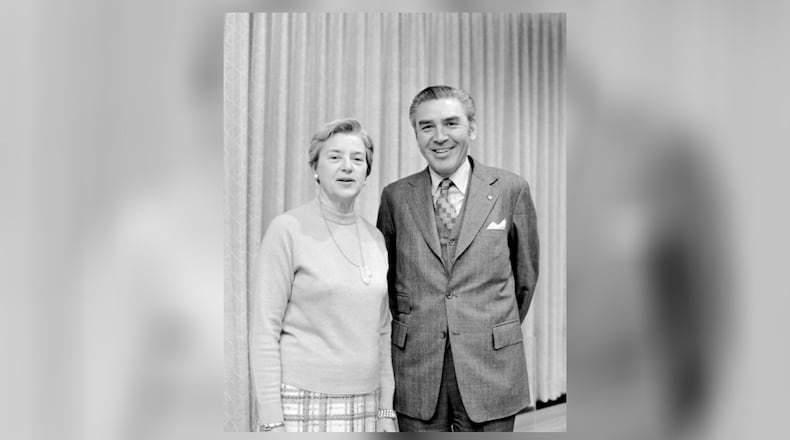Born in China, Anderson later recounted to the New York Times that an NCR employee, George Haynes, first offered him a job with NCR while both men were prisoners of war.
“I turned him down,” Anderson told the Times in 1973. “I had never heard of NCR nor seen many cash registers in China. And anyway I had a perfectly good job as a partner in an accounting firm, to return to in Shanghai.”
After he took NCR’s helm in Dayton in 1972, the New York Times wrote a year later: “It is estimated that his elevation to president and chief operating officer passed him over the heads of at least 30 more senior executives.”
At the time, Anderson had worked for NCR for 27 years. His entire career with the company to that point had been in the Far East, where he took a leadership position for NCR in 1959 and became chairman of NCR Japan, the Times wrote.
Locally, Anderson played a role in the building of a new headquarters for NCR at 1700 S. Patterson Blvd. Today, the building is the University of Dayton’s second largest campus building.
NCR first unveiled plans for the building in September 1974.
“This program confirms NCR’s previously stated intentions of retaining its world headquarters in Dayton,” Anderson told the (Dayton) Journal Herald then.
The new headquarters was meant to replace what had been known as Building 10, a 67-year-old, 12-floor building on South Main Street, a structure that has long since been razed.
Originally slated to be a $10 million, 255,000-square-foot structure, the new building was to be built in a tree-ringed clearing often used by University of Dayton football players for practice.
Today, NCR is gone, having moved its headquarters and local workforce in 2009 to the Atlanta area.
But UD bought the building, with 115 acres, for $18 million in late 2009 and uses the now-457,000-square-foot building for its research institute and other purposes.
The winged structure was built across a lagoon from Carillon Park — requiring the construction of a bridge — facing motorists where Patterson and Carillon boulevards met.
From 1972 to 2007, Anderson and his wife Janice lived at a Washington Twp. home at 5101 Garden Springs Court. He retired as chairman in 1984.
Anderson and his wife established the Dayton Foundation’s first donor-advised fund in 1983, a key event in the foundation’s expansion during the 1980s that helped other donors recognize the value of the Dayton Foundation, said Michael Parks, foundation president.
“Together, the Andersons selflessly shared their gifts with the charitable organizations and causes they cared about most,” Parks said Tuesday. “He was a remarkable man, businessman and philanthropist with the utmost compassion for the future well-being of this community. His legacy will live on in greater Dayton.”
NCR, the historic producer of cash registers and accounting machines, was born in Dayton in 1884 when John Patterson became majority owner in the National Manufacturing Co., renaming it the National Cash Register Co. The first office, with 13 employees, was in the Callahan Power Building in Dayton. By 1911, NCR had sold 1 million cash registers.
Anderson is survived by his wife, three daughters and five grandchildren. He lived in a retirement home in Palo Alto, Calif.
About the Author


